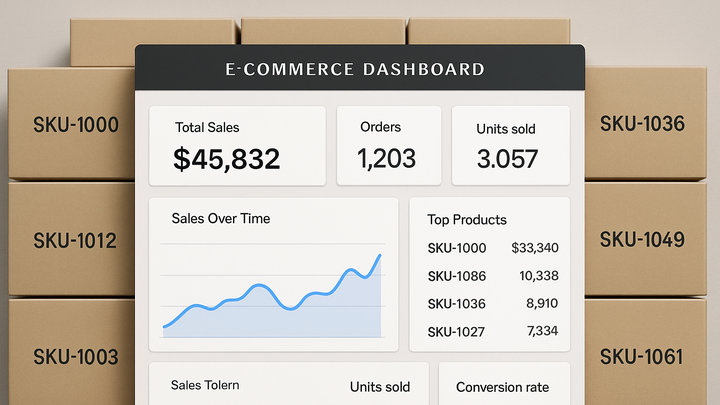Published on 2025-06-22T05:59:13Z
What is SKU (Stock Keeping Unit)? Examples and Importance in Analytics
In analytics, a Stock Keeping Unit (SKU) is a unique alphanumeric identifier assigned to each distinct product and service for sale. SKUs enable granular tracking of inventory, sales performance, and user behavior at the product variant level. By capturing SKUs, analysts can attribute revenue, monitor stock levels, and optimize marketing strategies for individual items. This article covers the definition of SKUs, their relevance in web analytics, and practical implementation using Google Analytics 4 (GA4) and PlainSignal.
Sku (stock keeping unit)
A SKU is a unique product identifier for detailed inventory and sales tracking in analytics.
Importance of SKUs in Analytics
SKUs allow businesses to track performance metrics at the individual product level rather than aggregating data across entire categories. This precision helps in identifying top-selling variants, detecting underperforming inventory, and tailoring marketing efforts effectively.
-
Product-level insights
Tracking SKUs reveals which specific items (color, size, style) resonate with customers, enabling targeted promotions and inventory adjustments.
-
Inventory forecasting
SKU data powers demand forecasting models, reducing stockouts and overstock by aligning procurement with actual sales patterns.
Tracking SKUs in Google Analytics 4
Google Analytics 4 provides built-in support for e-commerce events that include an items array
where each item object can carry an item_id field corresponding to the SKU.
-
Implementing the purchase event
Example GA4 code to send a purchase event with SKU:
gtag('event', 'purchase', { transaction_id: 'T12345', value: 59.99, currency: 'USD', items: [ { item_id: 'SKU12345', item_name: 'Classic T-Shirt', item_category: 'Apparel' } ] }); -
Analyzing sku reports
Navigate to Monetization > E-commerce Purchases and add
Item IDas a primary dimension to view metrics such as revenue and quantity by SKU.
Tracking SKUs with PlainSignal
PlainSignal is a lightweight, cookie-free analytics solution. To capture SKU data, use custom events after installing the PlainSignal snippet.
-
Installation
Add this snippet to your HTML
<head>section:<link rel="preconnect" href="//eu.plainsignal.com/" crossorigin /> <script defer data-do="yourwebsitedomain.com" data-id="0GQV1xmtzQQ" data-api="//eu.plainsignal.com" src="//cdn.plainsignal.com/plainsignal-min.js"></script> -
Sending sku data
Use the PlainSignal API to send a purchase event with SKU information:
ps('event', 'purchase', { sku: 'SKU12345', price: 19.99, category: 'Apparel' });
Best Practices and Common Pitfalls
Maintaining consistent SKU usage and formatting ensures accurate analytics and inventory management. Avoiding duplicate and ambiguous SKUs prevents data discrepancies across systems.
-
Standardized formatting
Define a clear SKU schema (e.g., category initials + sequential numbers) to ensure consistency across platforms.
-
Avoiding duplicates
Ensure each SKU uniquely identifies a single product variant to prevent revenue attribution errors.
